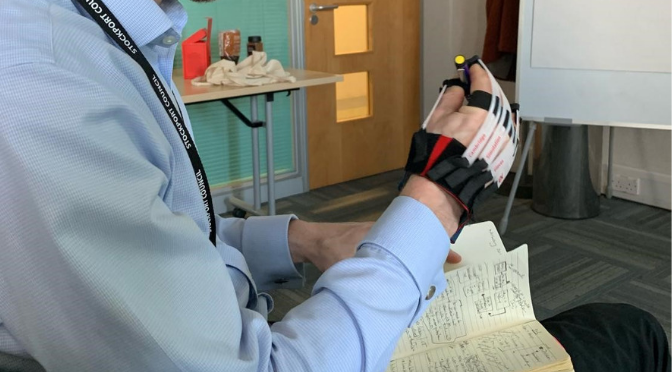At Stockport Council we’re constantly working to make our website as accessible and usable as possible for every user. To help us make our website a positive place for everyone, we’ve been using the Web Content Accessibility Guidelines (WCAG) 2.1 which explain how to make web content more accessible for people with disabilities, and user friendly for everyone.
Web accessibility is taken into consideration during our design, development and deploy phases using both manual and automated testing to check for any accessibility issues. We also commission an accessibility audit of the website every 2-3 years to get a more in-depth understanding of any challenges that users with a disability face when trying to access information on our website.
However, we have recently been learning more about what it means to truly design our content inclusively.
What is Inclusive Design?
The British Standards Institute (2005) has defined Inclusive Design as: ‘The design of mainstream products and/or services that are accessible to, and usable by, as many people as reasonably possible … without the need for special adaptation or specialised design.’ (Read more about the Definition of Inclusive Design.)
This means that when designing a product or service it must be usable by as many people as is possible. In order to do this properly, the product or service must be built to handle all of the needs of the different users. This cannot be an afterthought – it should be embedded at the front of our minds throughout the entire design process.
How are we learning?
We have been working with User Experience Consultants Sigma, and through them, with usability and accessibility consultant Molly Watt. Molly helps others to realise the importance of inclusive design by sharing with them her own personal experiences with Usher Syndrome. There have been two recent learning sessions at Stockport Council.
The Assistive Technology Presentation
This presentation, attended by people from many different areas of the council, was in two parts. To start, Sigma demonstrated the work that they have been doing with Stockport Council with regards to Service Design, as well as the toolkit that they are working with us to develop.
This was followed by Molly’s presentation on Inclusive Design. She told her own incredible story and shared with us some of her experiences with Usher Syndrome. To learn more about Molly and Usher Syndrome, please take time to watch her video. We would all like to give a huge thank you to Molly for being so open and delivering such a powerful and informative session.
After hearing Molly’s story, we learnt a lot about the different types of assistive technology and where we could utilise it at the council.
We were also given the opportunity to use some tools that gave us an idea of what it could be like to see with a visual impairment or to have dexterity problems. This gave even more weight to everything that we had learnt and heard from Molly.
The image shows a user wearing ‘arthritis’ gloves to learn what a struggle it can be to move your fingers.

The Assistive Technology Workshop
The workshop involved a smaller group of people (a variety of different roles from Digital by Design) with a focus on giving us the opportunity to try out different assistive technologies, primarily the different screen readers that are available.
Initially we focussed on smartphones and were introduced to some of the technology that is readily available to all. These functions under the accessibility tab in the settings menu allows the user to swipe down on your screen and your phone will read out the text. There is also an option to highlight certain bits of text and have them read aloud. There are other assistive options that smartphones offer alongside text-to-speech, including:
- Zoomed screen/magnifier/larger text
- Colour/contrast adjustment
- Hearing aid compatibility
- Subtitles/captions
- Display accommodations
Moving onto accessibility options for PCs, we looked at web content using NVDA software, effectively a screen reader that works for most websites. It is a tool that we already use at Stockport Council when we are designing and creating our web content to ensure our online forms and web content are accessible for all.
How will this change how we work?
Although we already ensure our content works with accessibility software, Inclusive Design is about going further. It is about designing and developing our content so well that anyone can access it easily without the need for additional screen readers etc.
This is obviously a very difficult task and can only be achieved through testing with the people who would normally use the accessibility software, to highlight the areas that they struggle with. We are already starting to do more testing like this and moving forward we will be working with these users earlier on in the process of designing our content.
If you’d like to get involved in helping to shape the accessibility of the council’s website please get in touch.
For regular updates from the #DigitalStockport blog sign up for email alerts.

